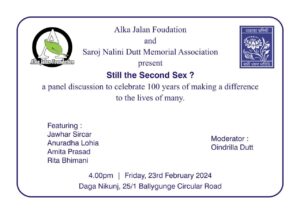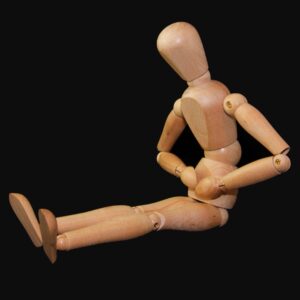Women are slowly gaining top positions

When Sirimavo Bandaranaike became the world’s first woman prime minister of what was then Ceylon in 1960, it caused international concern. How could a woman cope with such a demanding task?
Half a century later the woman president of Liberia, Ellen Johnson Sirleaf, received the Peace Prize from an impressed Nobel Committee for her contribution to ‘ensuring peace, promoting economic and social development and strengthening the position of women’.
Since 1960, in total 73 women have been presidents and prime ministers in 53 countries until the end of 2010. In 2010 there were 18 in all – or 6 per cent of the world’s top leaders. This was more than before, but there certainly was a way to go to attain gender balance.
All over the world the national political institutions are dominated by men. Everywhere, politics is considered a male domain. How did 73 women manage to rise to the top, and what happened when they got to power? These are themes of my new book “Women of power”.
Rich Countries at the Forefront
In 1945, the United Nations emphasised that women and men should have equal rights. During the following years, the number of nation states increased dramatically and economic and technological developments gave women and men across the globe greater income, more education and better health. Living standards were highest in industrial countries and about 40 per cent got one or more women as heads of state or government. In developing countries this was the case for only about 20 per cent. Thus conditions in industrial countries were more favourable for female leadership. People’s health, education and income were important, though they were not necessarily the only factors of importance.
Democracy
It has been an advantage for women in politics that the number of democracies increased. Democracy is based on the principle that people are equal, and it is the people, not a limited elite, that should govern. Therefore women should participate in decision-making bodies.
In non-democratic systems women generally did not become national leaders. Only two women were prime ministers in authoritarian countries (Elisabeth Domitien in CAR 1975 and Milka Planinc in Yugoslavia 1982), while nine women rose to power in turbulent transitions where democratic systems were not in place or did not work, where there were uprisings or civil war (Isabel Perón in Argentina 1974, Lidia Güeiler in Bolivia 1979, Sabine Bergmann-Pohl in GDR, Ertha Pascal-Trouillot in Haiti and Kazimiera Prunskienė in Lithuania 1990, Sylvie Kinigi in Rwanda and Agatha Uwilingiyimana in Burundi 1993, Ruth Perry in Liberia 1996 and Roza Otunbayeva in Kyrgyzstan 2010).
The great majority of women presidents and prime ministers obtained their positions in countries characterized as ‘democracies’. There were 62 women in 48 countries. Most of the women rose to the top in liberal democracies in Western industrial countries, while some did so in emerging democracies in Eastern industrial countries. Moreover, they were scattered over different regions.
Women’s Movement
If a democratic system is necessary for women’s political participation, it does not follow that it is sufficient. After World War II, Western industrial countries mostly had liberal democracies with political rights for women. But the systems were based on long-lasting male dominance, and women were not mobilized and welcomed in the political institutions.
An international women’s movement arose during the 19th century in industrial countries and their colonies, among others in Sri Lanka and India where Bandaranaike and Indira Gandhi became prime ministers. Inspired by a new wave of feminism in the 1970s, more women started to participate in formal politics. Parties and governments were put under pressure to let women in, and especially from 1975 the United Nations and the international women’s movement supported each other mutually. The women’s movements presented demands and formulated policies, while the UN promoted change, collected data, organized debates and set standards. In many countries political institutions became more open for women, women’s influence increased and woman friendly decisions were made.
When they rose to the top, at least half of the women national leaders benefitted, directly or indirectly, from women activists requiring more women in leading positions. This was the case also for Golda Meir and Margaret Thatcher, though they were seen as very critical to feminism. The number of women also increased in parliaments and governments.
Extraordinary Qualifications
In all regions the women top leaders had varied economic and social background. But regardless of the parent’s occupations and economy the daughters went to school and became an exceptionally well-qualified group. Practically all went not only go to primary and secondary school, but also got higher education at college and university.
Most of the women top leaders had far more education than the average in the population. Many had long professional careers before they became political leaders, and thirty achieved very high positions such as director, professor, researcher, attorney general, judge, editor or ambassador. At the same time as they had employment nearly all of the women married and 56 had children to take care of, from one to seven. It was unusual that men got high-level jobs, and even more that women got them. But more women top leaders had such positions than their male predecessors. More than men, women had to have high status to succeed.
Most of the women presidents and prime ministers achieved political power through the political parties. In addition to their professional careers they were active party members, climbed upwards in the hierarchy and acquired various positions: executive board members, party leaders or deputies, Members of Parliament, Speakers, ministers, vice presidents or deputy prime ministers. In Asia and Latin America several women based their careers on family relations, aiming to take over the position of a deceased father or husband. Chandrika Kumaratunga in Sri Lanka 1994 and Cristina Fernández in Argentine 2007 took over while their relatives (mother and husband respectively) still were alive. Some women came to power as ‘outsiders’, due to their special occupational status or participation in organisations outside the political parties. Four were elected particularly because they were women: Vigdís Finnbogadóttir in Iceland 1980, Mary Robinson and Mary McAleese in Ireland 1990 and 1997 and Ruth Perry in Liberia in 1996.
Penetrating Labyrinths
It has almost become a standard expression that a ‘glass ceiling’ blocks women’s way to leadership. But the study of women top politicians shows that the image of a glass ceiling is not only too simple, but also misleading. It gives the impression that there is only a single barrier, not that women encounter obstacles all the way, and it says nothing about what it takes to reach the ceiling. The metaphor also gives the idea that one can break the hindrances with a blow, once and for all. But in fact, complex interactions between different factors make it possible or impossible for women to reach the top. Various barriers must be overcome, perhaps one barrier several times, in different ways, and when one is overcome, there are new.
Most men also have to go through a labyrinth to advance to the top in politics. But labyrinths for men are usually simpler than those women have to go through, with fewer dead ends, nooks, crannies and barriers and more support. Women most often start with a handicap and encounter more resistance of different kinds due directly or indirectly to their gender. To achieve gender balance in the national leadership, institutional changes are required in the form of positive action measures such as women friendly electoral systems, gender quotas etc.
Men’s Interests or Women’s
The women did not become top leaders primarily because they were women, but because they should lead the nation. Some also acted in the same way as their male colleagues, fighting on their terms and becoming the first among equals, without being engaged in ‘women’s issues’, whatever they might be. Examples are Margaret Thatcher in the UK 1979, Violeta Chamorro in Nicaragua 1990, Tansu Çiller in Turkey 1993 and Megawati in Indonesia 2001. Nearly half of the women tried to compromise, however, between men’s and women’s interests, looking after both. But one third, among them Gro Harlem Brundtland in Norway 1981, Benazir Bhutto in Pakistan 1988, Helen Clark in New Zealand 1999 and Michelle Bachelet in Chile 2006, challenged male domination and explicitly promoted women friendly or feminist policies. So, some of the top women leaders did more, some less, but the vast majority did something to improve the status of women. It made a difference that a woman rose to the top instead of a man.


